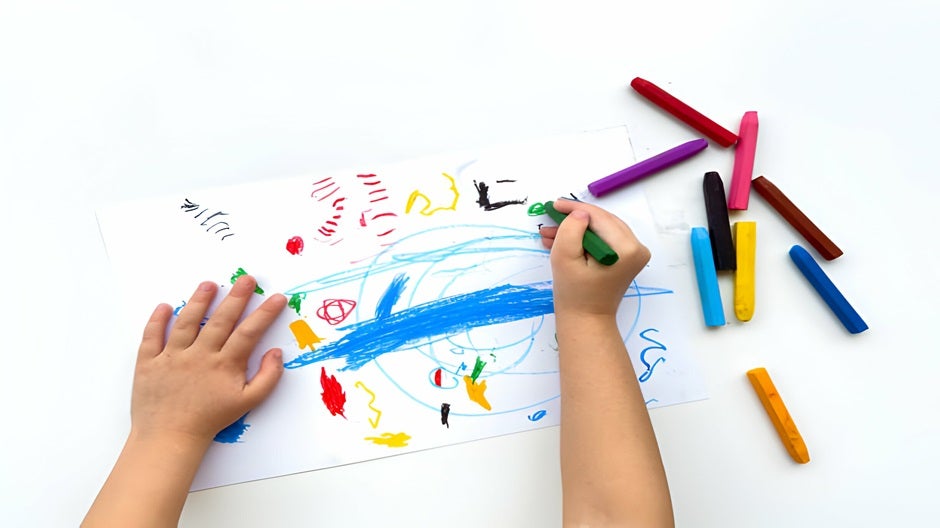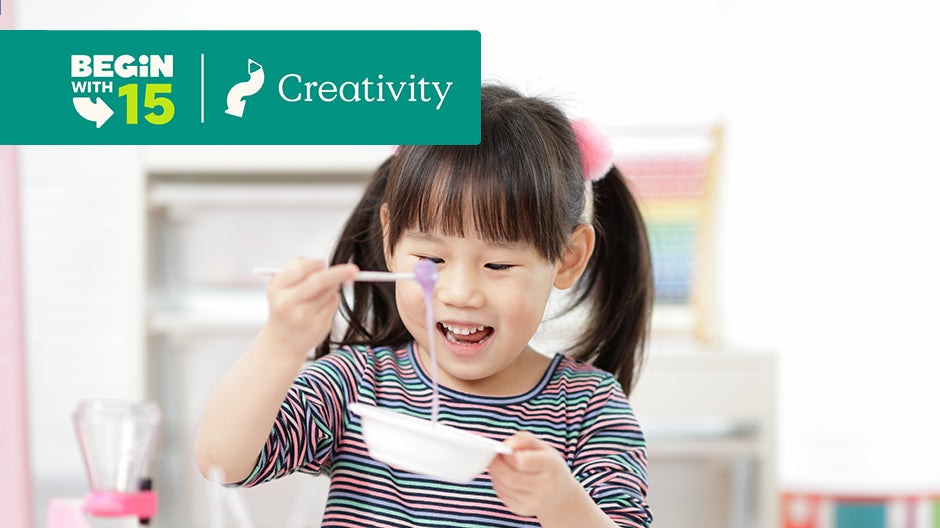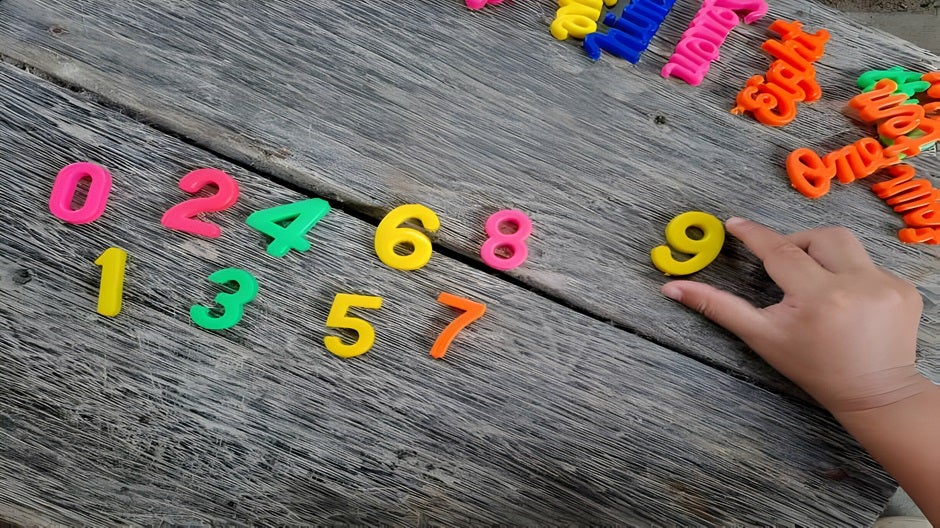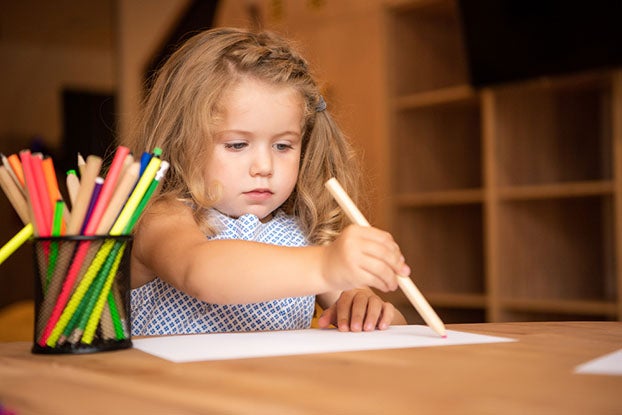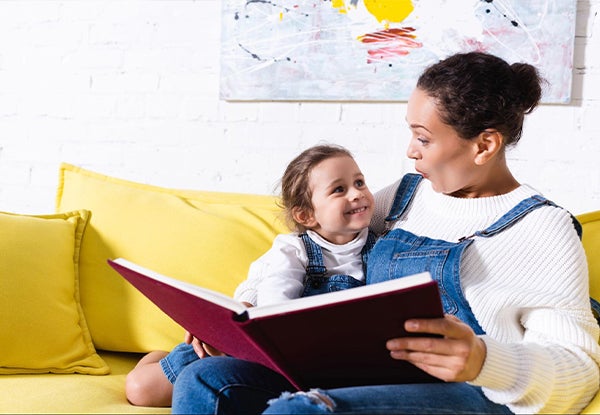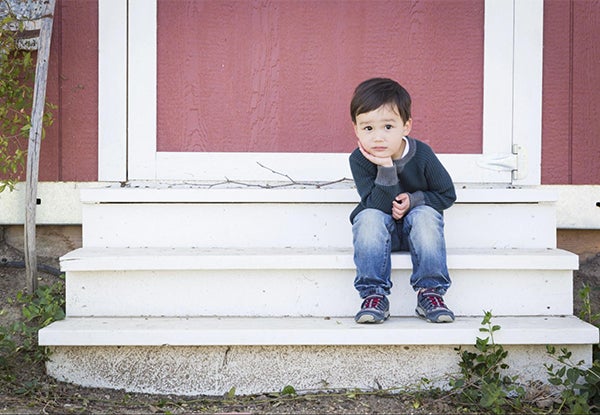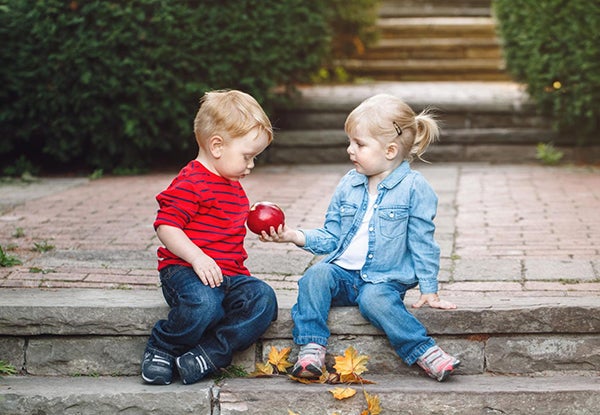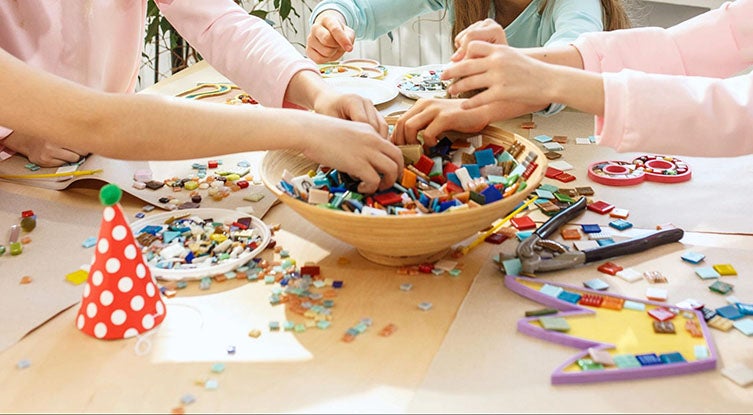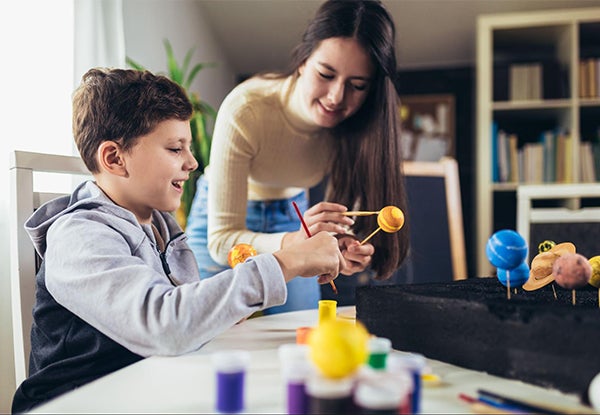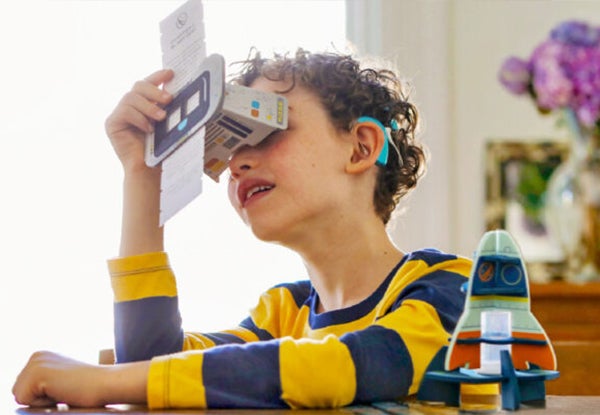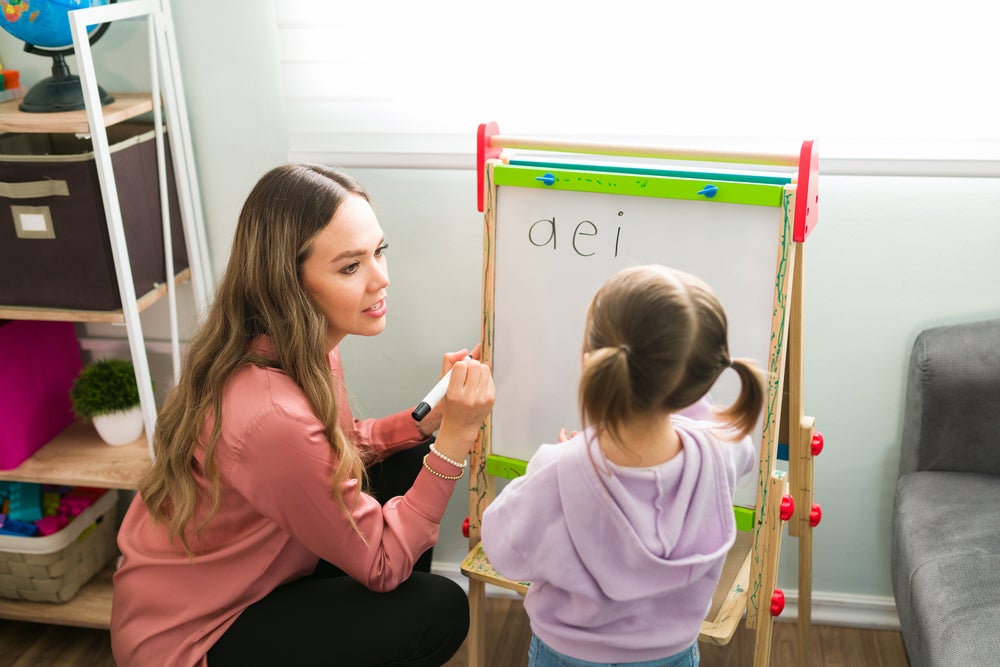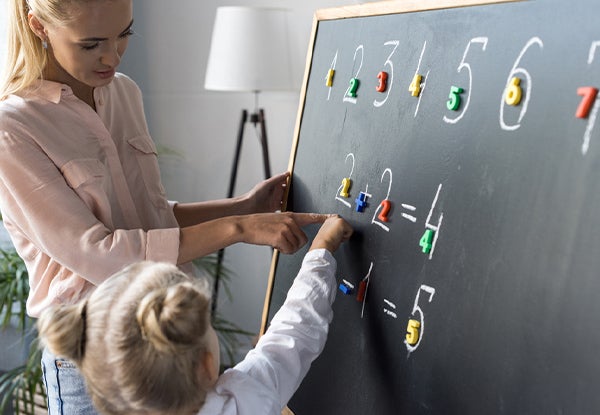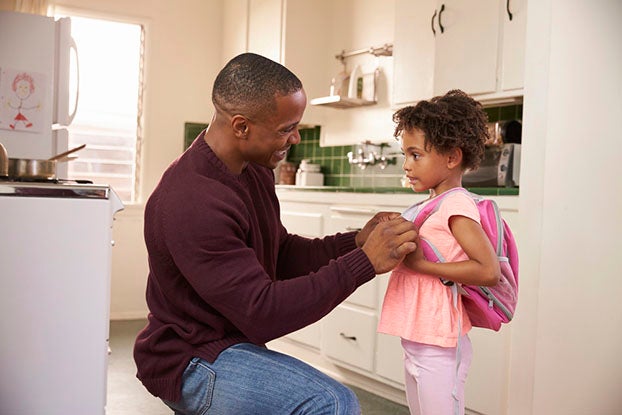You’ll know from browsing Begin’s products that we — along with many parents and educators — love hands-on learning.
Hands-on learning is all about learning through doing and, in this article, we’ll dive into why this approach is so beneficial for your child. We’ll also offer a few effective ways to introduce this learning philosophy to your child at home.
Let’s dive right in!
Table Of Contents
- What Is Hands-On Learning?
- 7 Key Benefits Of Hands-On Learning
- Hands-On Learning Tips For Parents
- 5 Hands-On Learning Ideas
What Is Hands-On Learning?
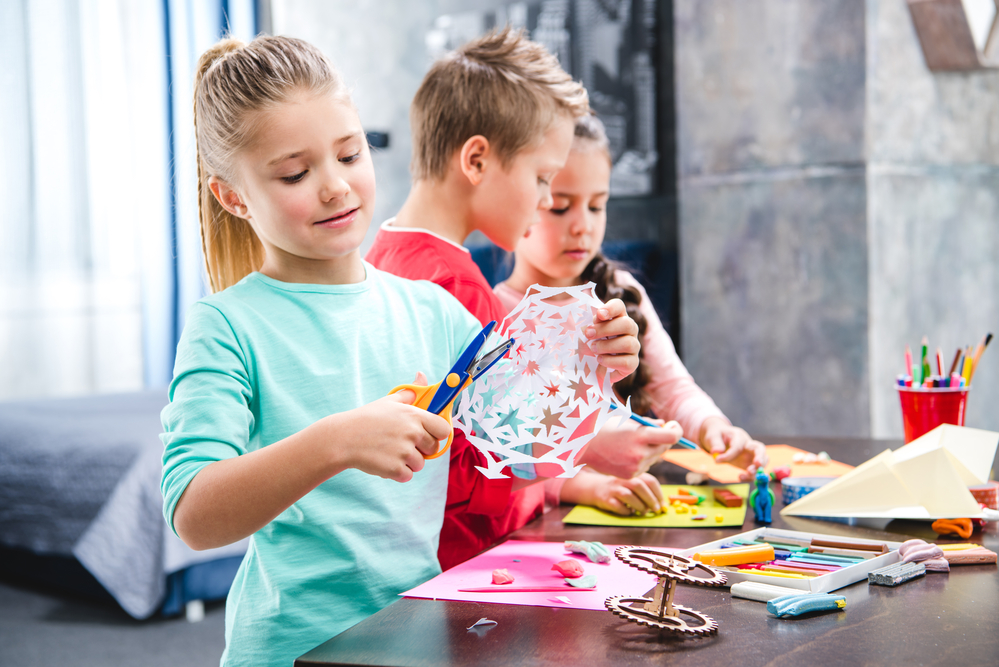
Hands-on learning uniquely allows kids to gain knowledge of the topic or idea they’re learning through experience. And also? It’s really fun!
This type of learning allows kids to engage the subject matter with their hands to create something or solve a problem. They are able to touch and manipulate the objects they are learning about, which is an additional sensory experience.
This approach goes by a variety of names. Some of the most common are experiential learning, learning-by-doing, or project-based learning, but they all mean the same thing.
A few subjects come to mind when thinking about hands-on learning — like science and art classes. Paint brushes, safety goggles, drawing materials, and so much more are all a part of this super engaging learning method.
While these subjects have traditionally taken on the experiential learning philosophy, the reality is this approach can be applied to almost any subject.
For example:
- Solving puzzles or working with building blocks to create interesting geometric shapes as a part of math class
- Constructing a playful environment to reenact a story you’ve read and practice vocabulary
- Practicing telling time by making an analog clock with paper and a brass fastener
All of these are great examples of how hands-on learning can be used in almost any classroom (or home!) to help children learn.
7 Key Benefits Of Hands-On Learning
Hands-on learning offers many benefits to students of all ages. Let’s explore them.
1) Encourages Interaction To Improve Skills
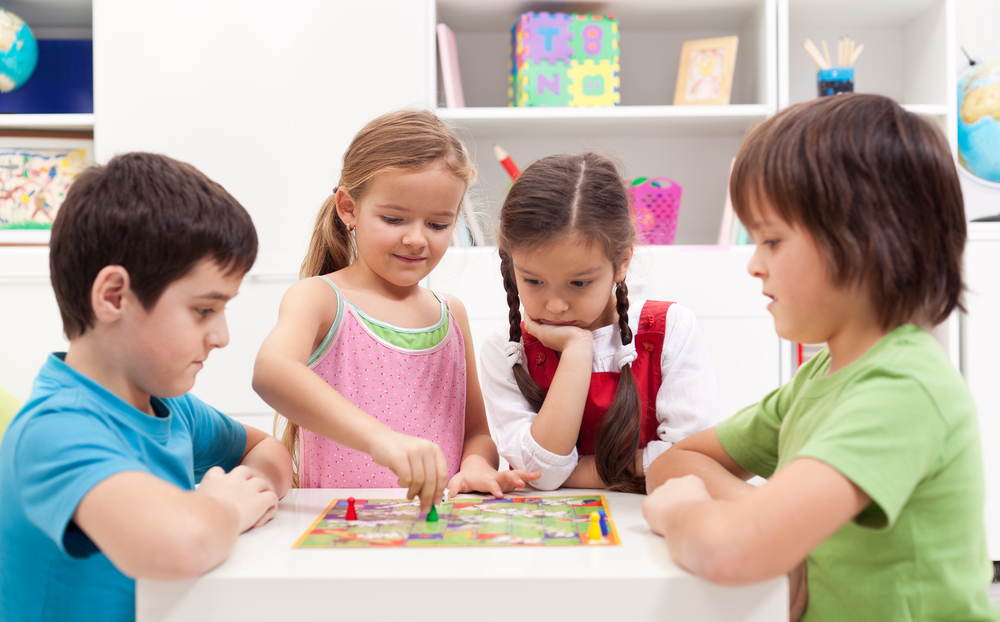
The traditional sense of learning — where a caregiver reads from a textbook and children sit quietly and listen — lacks in one key area: engagement. This is where experiential learning shines because kids get to literally engage with the content.
Learning by doing is also great in helping children practice the skills that they’ve just learned.
Think about when you’ve learned a new skill, like driving, cooking, baking, or playing an instrument. You know that you better retain the information the more you get to practice doing it. The same is true for kids!
2) Makes Abstract Concepts Concrete
When children learn to count, they usually recite the numbers from memory. But this doesn’t necessarily mean a child understands quantities. It’s only when they physically hold objects they’re counting that they begin to understand what the numbers mean (e.g., I have six beans!).
By using hands-on learning, children are able to connect what they’re learning to the real world. That’s because they sometimes get to actually create something (i.e., drawing, painting, construction project, etc.). And this is something real.
For example, children might be taught about colors in art class and what happens when they are mixed. But if their teacher just reads this from a textbook, the words may mean nothing to them.
However, when they get to mix blue and yellow and produce green, this is a concept they’ll never forget. Active learning is also empowering because it shows children that they can impact the world around them — they can produce something.
3) Strengthens Fine Motor Skills
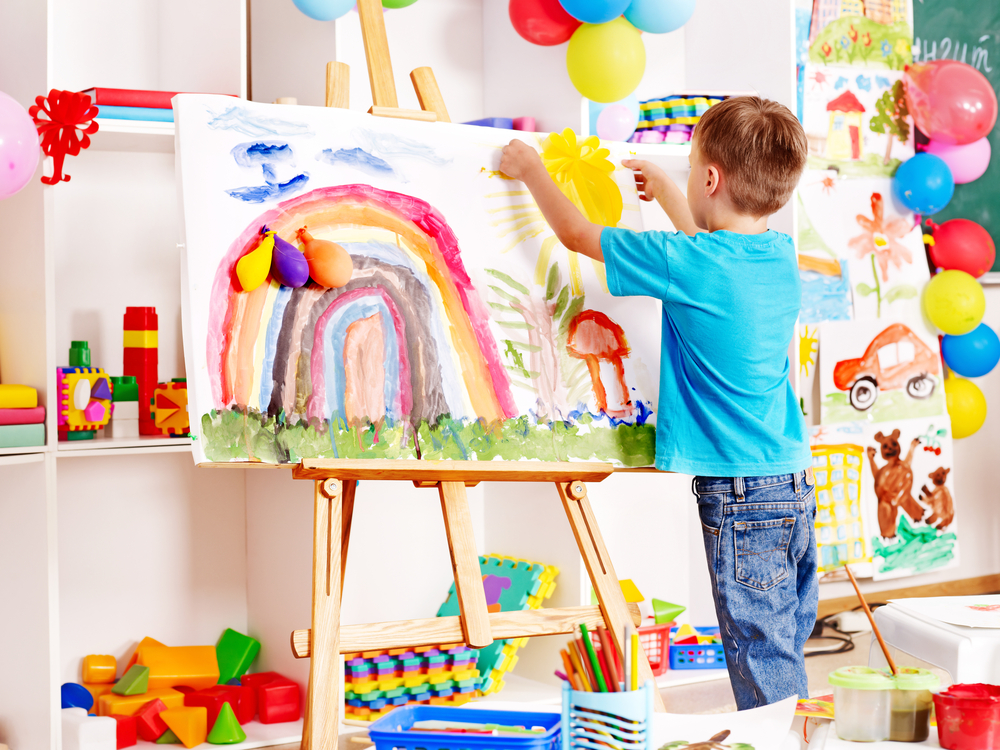
Experiential learning is also important for younger children because it encourages them to work on their fine motor skills. These skills require the small muscles in your hands and fingers to perform precise movements.
Every time your child manipulates their playdough, carefully cuts a piece of paper with scissors, or learns how to hold a brush so they can paint, they are developing fine motor skills, which they will use well into their adulthood.
4) Allows For Creativity

Hands-on learning allows kids to get creative. When most people hear “creativity,” they tend to associate it with subjects like music or art, but these aren’t the only subjects where creativity comes into play.
For example, writing a few sentences to describe a picture requires a great deal of imagination. But so do science experiments! And even learning to count different items requires kids to engage their creative side.
Creativity results in a new way of thinking about a particular concept, which is why it’s one of the 5 C’s (along with core skills, critical thinking, curiosity, and character) at the heart of the Begin Approach to helping kids thrive in school and life.
5) Promotes Problem-Solving Skills
When children are allowed to figure things out independently, they learn how to think critically and develop solutions. They might not arrive at a solution like you would, but that’s the beauty of experiential learning — it allows for different perspectives and approaches.
By engaging in hands-on activities, children are faced with challenges to solve. This could be building a structure with blocks, creating a piece of art with limited materials, or finding a way to make their homemade volcano erupt.
Through this process of trial and error, children learn to think critically, problem-solve, and persevere through challenges — all essential skills that will serve them well in the future.
6) Builds Social Skills
Hands-on experiences often involve group work or collaboration, which can help children develop important social skills. As they work together to solve a problem, they can practice:
- Communication
- Compromise
- Conflict resolution
- Teamwork
These skills help shape your child’s character, another one of the 5 C’s of the Begin Approach.
7) Sparks Curiosity
When working with different materials and manipulatives, children are often inspired to explore and ask questions like:
- What would happen if I mix these two colors?
- Why is this structure stronger than the others?
- Is there a faster way to complete this puzzle?
These curiosities are the remarkable beginning of scientific thinking, fostering a sense of inquiry and a desire to learn more about the world around them.
When children are encouraged to ask questions, they become active participants in their education, not just passive recipients of information. The Begin Approach also values curiosity, and many of the activities in our membership plans are designed to work on this trait.
Hands-On Learning Tips For Parents
Now that you know why it’s important for your child to engage in learning by doing, here are some tips to help you incorporate hands-on activities into their everyday routine.
Provide Open-Ended Materials
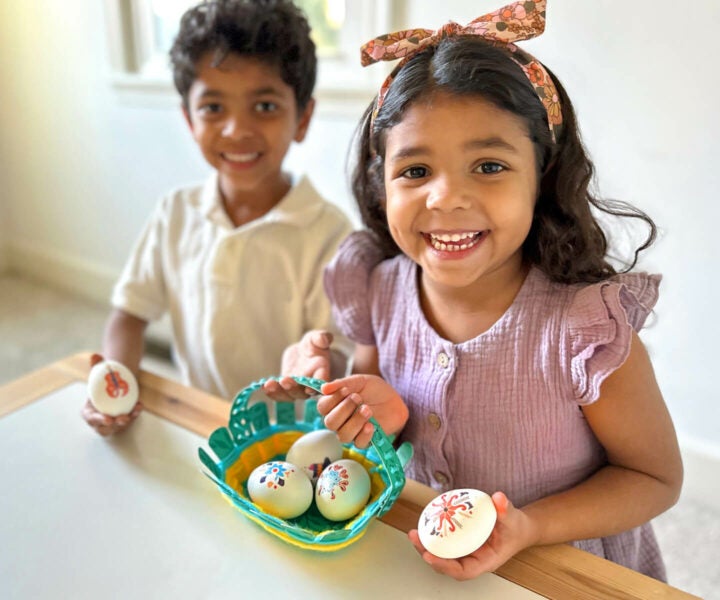
There’s no right way to use blocks, art supplies, or any other open-ended material. Let your child explore and create with these items without giving them specific instructions.
Simply step back and see where their imagination takes them!
Try Not To Jump In
When your child is engaged in an experiential learning activity, resist the urge to take over or correct their actions. Let them experiment and try to figure things out on their own. This helps them develop independence and problem-solving skills.
Get Outside
Nature is the perfect playground for hands-on learning experiences. Take advantage of parks, beaches, and even your backyard for outdoor activities like scavenger hunts, plant identification, and exploring different textures.
Your child can collect natural materials for further study. They can use them for art projects or science experiments. The possibilities are endless!
Encourage Questions
The word “why” has sort of a bad rap among parents, but it’s actually a crucial part of learning. Encourage your child to ask questions and give them answers when you can.
If you don’t know, it’s OK to tell them that and to search for answers together. They’ll see that you never stop learning.
Follow Your Child’s Interests
No two children are alike. They each have their own interests and ways of learning.
If your child is strongly interested in a topic, follow their lead. Help them find books about this topic at the library or create activities around it.
Subscribe To Little Passports

Little Passports by Begin is a subscription service that delivers hands-on learning activities straight to your doorstep every month. Each package focuses on a different theme, providing educational and fun experiences for your child.
You can select from several different packages to find the one that best fits your child’s age and interests. It’s a simple way to keep learning engaging while exposing your child to various topics.
Take Field Trips
Field trips aren’t just for school! You can plan field trips with your family or join organized ones through local venues or groups.
These trips provide hands-on experiences in different environments and allow children to see real-life applications of their learning. Plus, it’s an excellent opportunity for bonding and creating lasting memories.
While your exact destination may vary based on where you live, here are some ideas for field trips that can be educational and enjoyable:
- Local museum
- Art gallery
- Local farm
- Science center
- Planetarium
- Historical site
- Aquarium or zoo
- Fire station
Embrace Mistakes
Experiential learning involves trial and error. Encourage your child to try new things and not be afraid of making mistakes.
Instead of scolding them for getting something wrong, praise their effort and help them understand what went wrong so they can learn from it. Being able to move on from mistakes instead of giving up will help your child develop resilience and a growth mindset.
Encourage Reflection
After completing a learning project, take some time to reflect on the process and discuss it with your child. Reflection encourages critical thinking and helps solidify the concepts you learned about.
Here are some questions you can ask your child during this process:
- What challenges did you face, and how did you overcome them?
- What was your favorite part of the project? Why?
- What was something interesting you learned?
- How did this experience make you feel?
- What connections can you make between this activity and something else you’ve learned?
- Is there anything different you’d do next time?
These discussions promote deeper understanding and encourage children to take control of their own learning.
5 Hands-On Learning Ideas
With those tips in mind, here are five specific hands-on learning ideas you can try with your child.
1) Examine Some Fossils
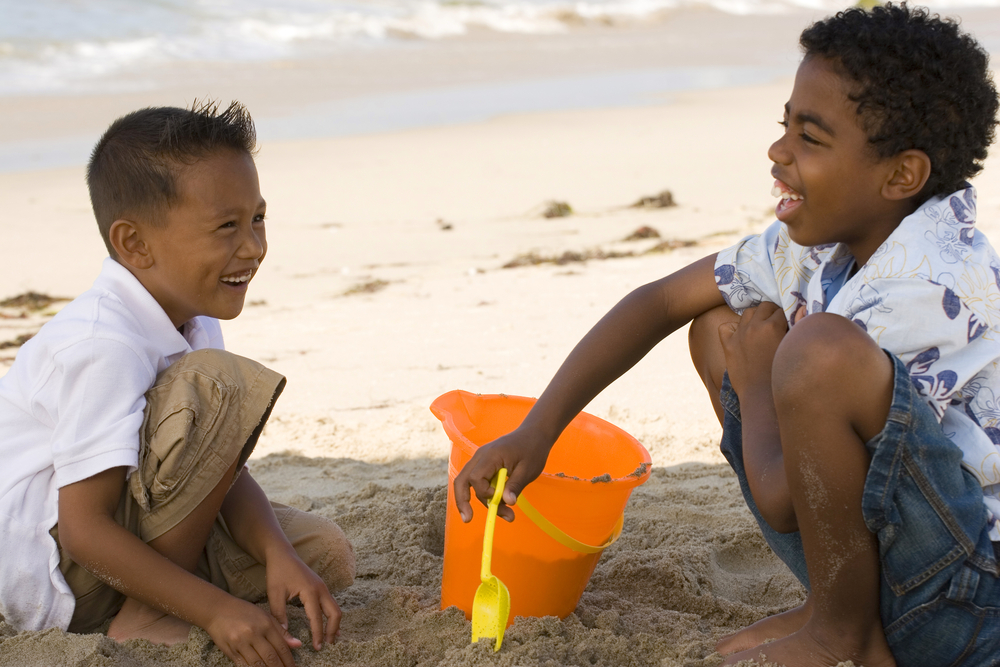
What You’ll Need:
- Lots of sand (or dirt)
- Large plastic tub
- Craft sticks and/or rocks
What To Do:
This is a great activity to do after reading about dinosaurs and how paleontologists discover dinosaur fossils as a way to learn about these ancient animals. To get started, encourage your child to put sand or dirt in a large plastic tub. Then, hide craft sticks and small rocks in the sand.
Once you have this set up, let your child act as a paleontologist on the hunt for fossils in the tub. This is a great activity for preschoolers and kindergarteners to learn about fossils (even if they are just fake).
It’s also beneficial to examine the properties of each “fossil” they find, which is a fun way to build vocabulary and imagination — This stick is super long. It might be the arm or leg of a dinosaur!
2) Make A Craft Box
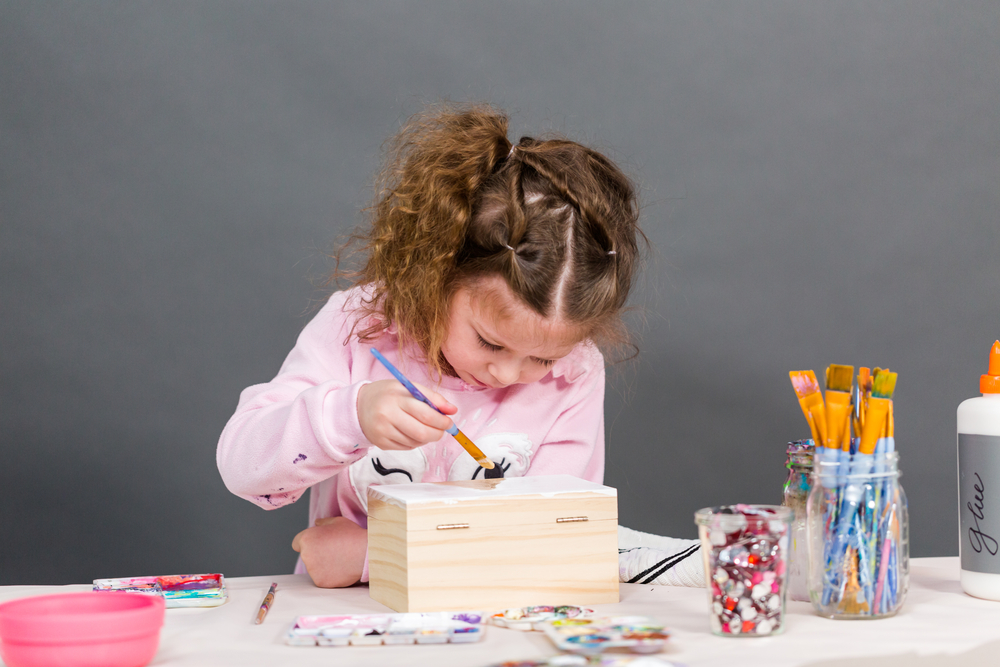
What You’ll Need:
- A box
- Glue
- Scissors
- Cotton balls
- Pipe cleaners
- Playdough
- Any other craft supplies you have around the house
What To Do:
Your child can make their own Craft Box to house craft supplies that they can use to build any imaginary world that comes to mind.
Will they create a construction site? How about a theater where the dolls or action figures present a show? There is no right or wrong here!
This is an excellent activity for kindergarteners and first graders. They will learn how to build, mold, or manipulate items with their hands, which is an effective way to continue developing their creativity.
If your child enjoys crafts, they’ll love Craft Discovery from Little Passports! As your child completes a new project each month, they’ll learn about art, science, geography, and culture.
3) Create A NumberBow
What You’ll Need:
- Two sheets of paper
- Pencil
- Crayons (or colored pencils)
- Dice
What To Do:
NumberBow engages your child creatively while they continue developing their mathematical skills.
First, you’ll need to draw two identical rainbow-shaped boards on your sheet of paper (one each). These boards should also be numbered. Here’s a link for reference.
To play, each player will throw two dice, add the numbers together, and color in that number on their rainbow.
For example, if a player throws a five and a two, that player will color in the number seven box. If it happens that they’ve already colored that number in, that player will need to wait until their next turn.
Each player gets 10 turns, and the goal is to have the most colorful rainbow at the end!
If you have multiple children, this can be a great activity to get the whole family involved. It’s also ideal for kindergarteners and first graders because they get to practice their counting and addition skills in a fun way.
4) Build A Bridge
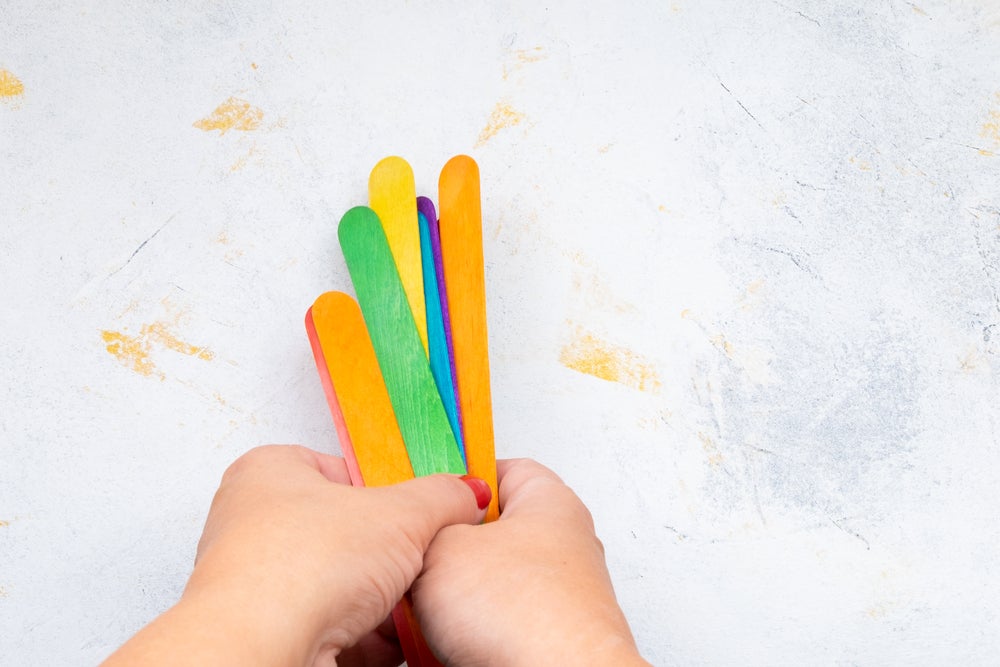
What You’ll Need:
- Craft sticks
- Glue or tape
- Small cars to drive across the bridge
- Objects to use as weights
What To Do:
This STEM activity helps teach your child problem-solving and engineering concepts. Plus, it’s a great way to build their fine motor skills.
First, give your child the supplies and have them experiment with different ways to connect them. Encourage them to come up with their own idea for building a strong bridge.
Once they have an idea, they may need your help to glue or tape them together. Stay close in case they need a helping hand, but let them take the lead.
Next, have your child try to drive a toy car across their bridge. If it collapses, encourage them to think about why and make adjustments to strengthen the structure.
To add an extra challenge, have your child place small objects on the bridge as weights. Can their bridge hold up under pressure? How much weight can it handle?
If your child enjoys this activity, you can also try building different types of bridges, such as suspension or beam bridges. You can even incorporate other materials like straws or toothpicks for added variety.
5) Design A Board Game
What You’ll Need:
- File folder
- Markers, crayons, or colored pencils
- Craft supplies (set out whatever you have on hand)
- Dice or a spinner
- Index cards
- Scissors
What To Do:
With a file folder and some basic craft supplies, your child can design and create their very own board game! This activity involves a mix of art, problem-solving, and critical-thinking skills. It also allows your child to express their creativity and imagination.
To get started, have your child brainstorm a theme or story for their game. Then, they can design the board layout and create game pieces using materials like paper, markers, or small figurines.
Encourage your child to think about their game’s rules and decide how players can win or lose. They can even create a rule book to accompany their game or ask you to jot their ideas onto a sheet of paper.
Play the game as a test run to see if any changes are needed. This part may take some trial and error, but it’s all part of the learning process.
Once everything is finalized, your child can invite friends or family members to play their game.
It’s Time To Touch And Learn!

As we highlighted above, there are lots of ways that children can learn, but studies have shown just how effective hands-on learning can be. That’s because children get to use their hands to see abstract ideas turn into something tangible, which can help them retain information better.
There are many reasons to encourage children to learn by doing, and we hope the above ideas can give you the right tools to use this learning method in your home.
For more exciting ways to encourage fun learning, check out the Begin Membership. It benefits your child’s learning journey by delivering the perfect combination of hands-on and digital play personalized to their age and stage.
Take our quiz today to find out which subscription is best for your child.
